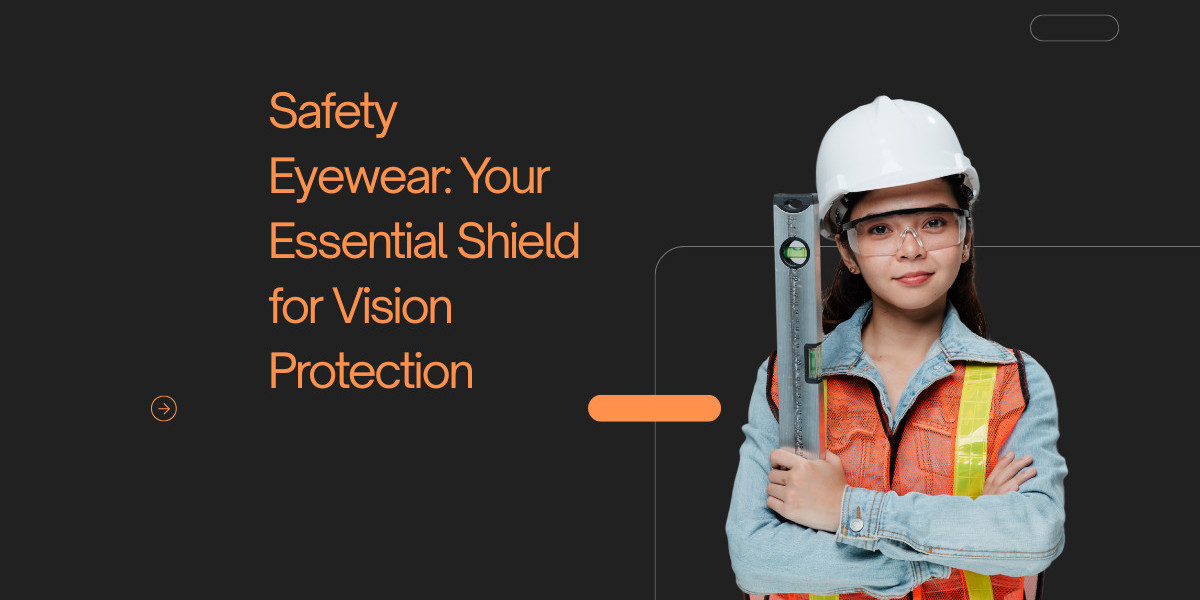Safety Eyewear: Your Essential Shield for Vision Protection
In any environment where hazards are present, protecting your vision should be a top priority. Eyes are not only delicate but also irreplaceable. One small incident can lead to life-changing injuries or permanent vision loss. That is why safety eyewear is a critical component of personal protective equipment across industries like construction, manufacturing, healthcare, and even laboratories. Despite the availability of advanced safety gear, eye injuries still occur daily, mostly due to the absence of proper protection. Understanding the importance of safety eyewear, the options available, and how to select the right protection can prevent these incidents and ensure long-term eye health.
Why Safety Eyewear Is Critical
The eyes are particularly vulnerable organs, exposed directly to environmental hazards such as flying debris, chemicals, sparks, dust, and radiation. Even in offices or laboratories, seemingly low-risk areas, accidents involving projectiles or chemical splashes can occur in a split second. In industrial settings, the risk is magnified due to the constant use of heavy machinery, cutting tools, and exposure to hazardous substances.
Safety eyewear acts as a barrier between your eyes and potential dangers. Wearing appropriate eyewear is not just a precautionary measure; it is often a requirement regulated by occupational safety standards worldwide. Regulatory bodies like OSHA (Occupational Safety and Health Administration) in the United States mandate eye protection in work areas where there is a risk of injury. Companies that enforce strict safety protocols involving eyewear significantly reduce their workplace injury statistics, maintain productivity, and protect their workforce.
Understanding Safety Eyewear
Safety eyewear includes a variety of products designed to shield the eyes from specific hazards. Unlike regular glasses, safety eyewear is built using impact-resistant materials such as polycarbonate, which is highly durable and offers superior protection against sudden impacts, splashes, and even UV radiation.
Each piece of safety eyewear must meet stringent standards. For instance, ANSI Z87.1 is a key safety standard in the United States, ensuring that eyewear provides adequate protection against mechanical, chemical, and radiation hazards. European standards like EN 166 offer similar guarantees.
It is important to distinguish between regular prescription glasses and certified safety eyewear. Standard glasses, while capable of offering some level of protection, are not tested or designed to withstand industrial hazards. Safety glasses, goggles, face shields, and specialty lenses are made with reinforced frames and lenses to absorb shocks and prevent injury.
Different Types of Safety Eyewear
Safety eyewear is designed in several forms to cater to the diverse nature of workplace hazards. Safety glasses are the most common type, equipped with side shields to protect against flying objects. They are lightweight, comfortable, and available in both non-prescription and prescription versions.
Safety goggles provide a more sealed environment around the eyes, offering protection not just from impacts but also from dust, chemical splashes, and vapors. They are ideal for laboratory work, medical environments, and construction sites where fine particles or liquids are a concern.
Face shields cover the entire face and are used in conjunction with other forms of eye protection when tasks involve grinding, cutting, or exposure to chemicals. While they provide extensive coverage, they are usually not a substitute for impact-rated eyewear underneath.
Welding helmets are specialized forms of eye and face protection, designed to protect against intense light and radiation during welding activities. Auto-darkening filters and shaded lenses are key features that protect welders from dangerous UV and infrared rays.
Laser safety glasses and radiation protective eyewear are other specialized categories used in healthcare, research, and manufacturing where exposure to intense light or radiation is a risk.
How to Choose the Right Safety Eyewear
Choosing the right safety eyewear begins by assessing the specific risks present in your environment. For instance, construction workers need strong impact resistance, while lab technicians require protection from chemical splashes. Identifying these hazards helps narrow down the appropriate type of eyewear.
Fit and comfort are crucial considerations. Ill-fitting eyewear can slip off, create gaps, and lead to exposure or discomfort that discourages regular use. Features such as adjustable nose pads, rubber temples, and customizable headbands in goggles ensure a snug fit without compromising comfort. Ventilation features in goggles also prevent fogging, ensuring clear vision during critical tasks.
Lens material and coatings play an important role too. Polycarbonate lenses offer impact resistance and UV protection, making them suitable for outdoor work. Anti-fog coatings are essential in humid environments, while scratch-resistant coatings prolong the life of the lenses in dusty or abrasive settings.
Prescription needs should not be overlooked. Workers requiring vision correction can opt for prescription safety glasses or over-the-glasses (OTG) goggles, ensuring they do not have to compromise between clear sight and safety.
Another factor to consider is compliance with regulatory standards. Always look for certification marks indicating that the eyewear meets ANSI, EN, or other relevant standards. This guarantees that the product has been tested for the hazards it claims to protect against.
Maintaining and Caring for Safety Eyewear
Like all personal protective equipment, safety eyewear must be maintained properly to retain its effectiveness. Cleaning lenses regularly using mild soap and water or lens-specific cleaners prevents buildup of dirt, oils, and chemical residues that could impair vision or damage the material.
Storing eyewear in protective cases prevents scratches and physical damage when not in use. Exposure to high temperatures, strong chemicals, or abrasive surfaces can degrade the lenses and frames over time, so proper storage is critical.
Regular inspection is necessary to check for scratches, cracks, or loose parts. Damaged safety eyewear must be replaced immediately, as compromised lenses or frames can fail to provide adequate protection during an accident.
The Role of Safety Eyewear in Workplace Safety Culture
Instituting a strong safety culture includes emphasizing the importance of personal protective equipment like safety eyewear. Employers must educate their teams on when and how to use eye protection properly. Training programs, signage, and regular safety audits reinforce this message.
Providing a variety of comfortable and stylish options also increases the likelihood that employees will wear their safety eyewear consistently. Modern safety eyewear comes in a wide range of designs that resemble regular glasses, removing the stigma once associated with clunky protective gear.
Ultimately, prioritizing eye safety conveys respect for employees' well-being, reduces workplace accidents, minimizes insurance claims, and boosts morale and productivity.
Frequently Asked Questions (FAQs)
What makes safety eyewear different from regular glasses?
Safety eyewear is made from impact-resistant materials and is designed to meet strict safety standards like ANSI Z87.1. Regular glasses are not tested for high impact or chemical resistance and do not offer the same level of protection.
When should safety eyewear be worn?
Safety eyewear should be worn whenever there is a risk of eye injury, including activities like grinding, cutting, welding, handling chemicals, or even in areas with flying debris or dust particles. Employers are responsible for enforcing its use when necessary.
Can I wear contact lenses under safety eyewear?
Yes, contact lenses can be worn under safety glasses or goggles. However, contacts do not provide any protection by themselves. Proper protective eyewear must still be worn to shield the eyes from hazards.
How do I know if my safety eyewear meets the required standards?
Look for certification marks like ANSI Z87.1, EN 166, or other relevant standards printed on the eyewear. This ensures that the eyewear has passed rigorous testing for impact resistance and other protective features.
How often should I replace my safety eyewear?
Safety eyewear should be replaced whenever it shows signs of damage such as cracks, deep scratches, or if it no longer fits properly. Even without visible damage, it is advisable to replace eyewear regularly, especially if it has been exposed to chemicals or UV radiation for extended periods.
Conclusion
Safety eyewear is a simple yet profoundly important tool in the effort to prevent eye injuries. Whether in a bustling construction site, a sterile laboratory, or a dynamic manufacturing plant, the right protective eyewear ensures that workers return home with their vision intact every day. By choosing appropriate eyewear, maintaining it carefully, and fostering a culture of safety, organizations and individuals alike can safeguard one of their most precious assets—their sight. Investing in quality safety eyewear is not merely a legal obligation; it is a commitment to health, well-being, and the future.














